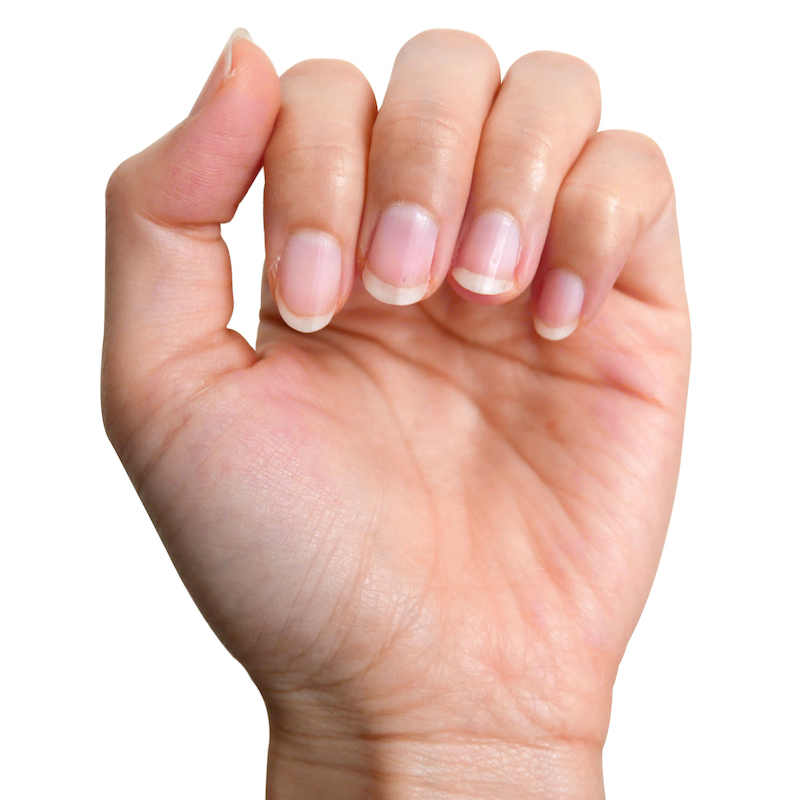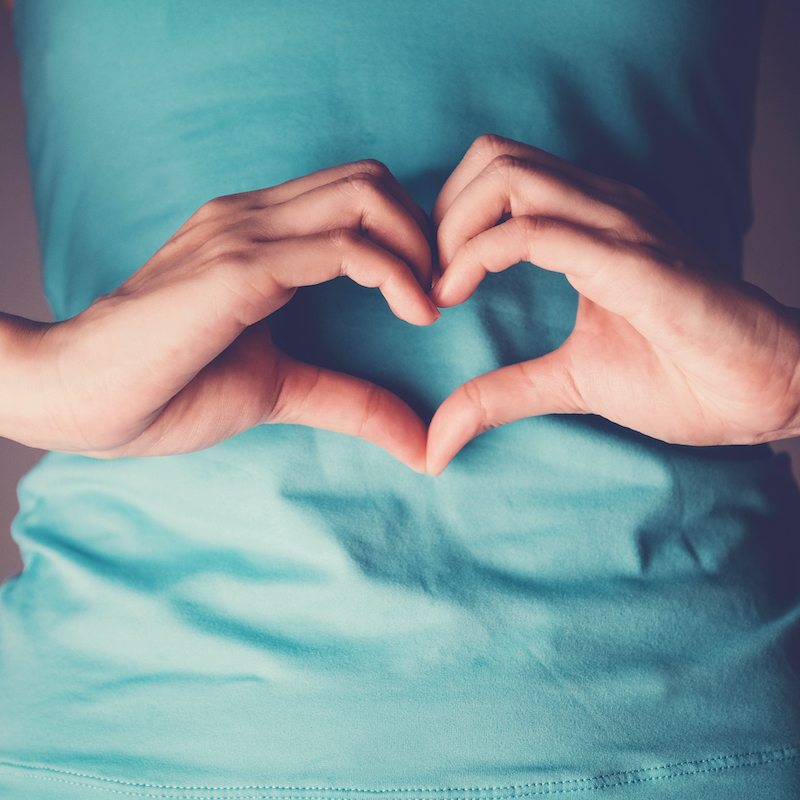This Dr. Axe content is medically reviewed or fact checked to ensure factually accurate information.
With strict editorial sourcing guidelines, we only link to academic research institutions, reputable media sites and, when research is available, medically peer-reviewed studies. Note that the numbers in parentheses (1, 2, etc.) are clickable links to these studies.
The information in our articles is NOT intended to replace a one-on-one relationship with a qualified health care professional and is not intended as medical advice.
This article is based on scientific evidence, written by experts and fact checked by our trained editorial staff. Note that the numbers in parentheses (1, 2, etc.) are clickable links to medically peer-reviewed studies.
Our team includes licensed nutritionists and dietitians, certified health education specialists, as well as certified strength and conditioning specialists, personal trainers and corrective exercise specialists. Our team aims to be not only thorough with its research, but also objective and unbiased.
The information in our articles is NOT intended to replace a one-on-one relationship with a qualified health care professional and is not intended as medical advice.
Is Napping Good or Bad for You? The Science Behind a Power Nap
June 26, 2017

Our parents and babysitters may have been onto something when they encouraged us to nap — even in adulthood, brief, regular napping seems to be good for you in a variety of different ways, according to recent studies.
While our fast-paced society may discourage breaks and taking time to slow down, research shows the opposite to be true: Any time you can rest and “recharge your battery” is beneficial for both your body and mind.
Should You or Shouldn’t You Power Nap?
Regularly losing sleep and feeling lousy all day as a consequence? Naps might be a good tool for you. According to researchers from Harvard Medical School, (1)
… lately naps have been shedding some of their bad-for-you image. Researchers are finding benefits. A few employers have become accommodating of the quick snooze. And some research suggests that instead of fretting about napping more as we get older, we should plan on adding daytime sleep to our schedule as a way to make up for the normal, age-related decay in the quality of our nighttime sleep.
We know that sleep deprivation not only puts people at a greater risk of having fatigue-related accidents, experiencing bad moods or having poor job performance, but constantly being tired can also raise the odds for suffering from chronic diseases like obesity, diabetes, high blood pressure and depression. And turning to energy drinks or sugar for a pick-me-up is definitely not the answer. The biggest perk to naps might be better controlling cortisol and hormones related to stress.
For years, many successful people have sworn by the benefits of the “power nap.” Even several ex-presidents used napping as a tool to boost productivity and improve overall functioning. Power naps have now become the focal point for research looking at natural ways to improve cognitive and motor functioning, while potentially also reducing harmfully high stress hormone levels that can contribute to disease formation and accelerated aging.
So if chronic stress is killing your quality of life, perhaps it’s time to consider adding a power nap to your routine.
The Proven Benefits of a Power Nap
Research to date shows us that naps, when done the right way, can help balance hormones naturally and reduce sleepiness overall — especially the “lull” many of us experience in the afternoon — as well as improve mental and physical performance. (2)
And the good news is there’s no need to nap the day away to see some improvements. According to researchers from the School of Psychology at Flinders University in Australia, “A new biological process (called Process O) suggests that sleep onset followed by only 7–10 minutes of sleep can result in a substantial increase of alertness.” (3)
There’s plenty of advice available when it comes to planning the “perfect power nap.” It seems like napping has almost become a skill to some degree! It’s a good idea to be mindful about what sort of nap might serve you best. Different length naps have various effects on your abilities when you wake up. The benefits of a brief nap — somewhere between just five and 15 minutes — can almost immediately give you a quick “pick-me-up.” But this sort of short nap is thought to have benefits for a limited period, about one to three hours.
Longer naps — the kind that last for more than 30 minutes — can produce a short-term impairment immediately after waking up due to “sleep inertia,” but then they become beneficial for producing improved cognitive performance for a longer period of time, up to several more hours until bedtime.
Sleep inertia is a physiological state characterized by a decline in motor function and a feeling of grogginess immediately following an abrupt wake-up. So initially after waking up from a 30-minute to hourlong nap, you might feel out of it and even worse, but then after getting up and moving around for a bit, you’ll likely feel sharper and better than before you napped.
What’s considered the ideal amount of time for a “power nap”?
Findings from one 2006 study suggest that a 10-minute nap might be the most overall effective afternoon nap duration, mostly because it helps you avoid a feeling of sluggishness after waking up. (4) During the study, a five-minute nap produced few benefits in comparison with the no-nap control. The 10-minute nap produced immediate improvements in all outcome measures (including sleep latency, subjective sleepiness, fatigue, vigor and cognitive performance), with some of these benefits maintained for as long as 2.5 hours!
The longer 20-minute nap was associated with improvements emerging 35 minutes after napping (following some initial grogginess) and lasting up to 1.5 hours after napping. The 30-minute nap produced a period of impaired alertness and performance immediately after napping, indicative of sleep inertia, followed by improvements lasting up to 1.5 hours after the nap. Just remember, if you frequently can’t sleep come bedtime, you’ll probably want to take your naps earlier in the day, especially in they’re on the longer side.
Other factors that affect the benefits from a power nap include:
- The circadian timing of the nap: Napping in the early afternoon seems to be the most favorable time. But researchers also point out that we could still use more information on the benefits of brief naps that are taken more naturally, at the time when sleepiness actually becomes intrusive.
- How long you’ve been up: Researchers point out that “longer periods of prior wakefulness favor longer naps over brief naps.” So if you often experience a lack of sleep or get up very early and are awake for many hours before the afternoon hits, a longer afternoon nap might be more beneficial than a shorter one.
- How often you nap: Some research shows that people who regularly nap seem to adjust to afternoon naps better than those who rarely do, plus they usually experience greater restoration and other benefits than only occasional nappers do. (5)
5 Health Benefits of the Power Nap
1. Improves Cognitive Function
Results from a 2007 study published in the Journal of Sports Sciences found that a post-lunch power nap improves alertness and aspects of mental and physical performance. (6) Ten healthy male adults either napped or sat quietly from 1 p.m. to 1:30 p.m. after a night of shortened sleep, and then 30 minutes after the afternoon nap they were tested for various changes in performance. The results showed that the group of men who napped experienced significantly better improvements in alertness, short-term memory, intra-aural temperature, heart rate and scores on a short test.
We know that a certain proportion of our learning capabilities are dependent on sleep, but naps might be able to help with learning and remembering information just as well as sleep can. Brief (60- to 90-minute) naps containing both slow-wave sleep (SWS) and rapid eye movement (REM) sleep have been found to be very useful for mental performance for up to 24 hours. (7)
Another 2012 study published in the Journal of the Association of American Medical Colleges tested the effects of a brief afternoon nap on fatigued medical students. Nap group participants slept am average of eight to 12 minutes compared with the control group who did not nap. Those who napped had improved cognitive functioning and alertness, compared to the control group that experienced a number of attention failures on a brief test and had wakefulness that didn’t change from morning to afternoon. (8)
2. May Be Beneficial for Heart Health
Missing sleep can take years off your life, but good news: Napping can help. A recent study conducted by the University of Athens Medical School and the Harvard School of Public Health found that people who took naps regularly on average had lower coronary mortality than those who didn’t. (9) The researchers defined “regular” naps as the kind that took place at least three times a week for about 30 minutes at a time.
According to the National Institute of Health, naps are also useful for lowering stress and fighting feelings of “burn out” that can occur from overextending yourself and holding a high-stress job. (10) High stress and increased cortisol can contribute to disease-causing inflammation, so regular time spent relaxing can help minimize heightened risk factors for heart disease.
3. Helps Reduce Stress and Anxiety
Some research shows that napping can help reduce the stress-related impacts of getting bad or cut-off sleep. A 2012 study that appeared in the Journal of Clinical Endocrinology & Metabolism researched the stress-related effects in adults of two short naps taken during the day, each lasting about 30 minutes, and the ability to repair some of the damage caused by a poor night’s sleep of just two hours. Biological indicators of the adults who napped, such as stress hormones, were measured and then compared to a control group.
Researchers found that one of the three stress hormones measured, called noradrenaline, was increased the day after the men were sleep-deprived, but not if they were allowed to take naps. The level of a protein involved in beneficial immune responses (called Interleukin-6, or IL-6) was also reduced after little sleep but not if the men had naps. While these findings cannot prove that the immune system better “recovered” from stress after napping, it does seem to show favorable effects of napping for controlling stress hormones after sleep deprivation. (11)
Other studies involving children show similar benefits related to quality napping. Disruptive behaviors in children were associated with higher afternoon cortisol levels and shorter nap durations. The children who didn’t experience a rise in cortisol from morning to afternoon on average had more quality naps, less disruptive behaviors and interestingly slept for a shorter period of time at night, on average getting up earlier in the morning. (12)
4. Fights Food Cravings
Being tired is notorious for leading to increased hunger and food cravings. When the afternoon hits, many people have a sweet addiction and crave chocolate, sweets, soda or coffee to keep them going and resolve issues associated with unstable blood sugar. But if you’ve got just 10–15 minutes, try a brief nap instead. This can ultimately help restore your concentration and willpower while lowering stress hormones that can contribute to cravings.
Even better? Take a brief power nap followed by a brief power walk! Research suggests that a short walk can also help curb cravings and improve your mood.
5. Can Help Improve Physical Performance
Too tired to hit the gym after work? A brief power nap can help. Studies have found a correlation between short naps and improved athletic abilities, including faster sprint times and better motor reaction. (13) This might especially be true following a poor night’s sleep that can have negative implications for athletes during training or before competition.
Related: Top 6 Natural Ways for How to Improve Memory

The Pioneers of Napping
Napping has traditionally been reserved for children, the elderly and sometimes busy mothers, with working adults typically not expected to need a quick nap to get through the day. But historically, naps weren’t considered to be shameful, and some very successful people even used them to help build thriving, demanding careers.
Inventor of the lightbulb Thomas Edison, a known “workaholic,” loved to boast that he only slept four hours a night. He was a big promotor of a power nap’s healing abilities and claimed to clear off his work desk daily in order to stretch out and nap. Similarly, Leonardo da Vinci was believed to nap regularly and used power naps to offset the effects of sleeping less at night.
As political figures under a high amount of stress, Winston Churchill used naps to increase his resilience and energy, as did Napoleon Bonaparte. Former Presidents John F. Kennedy and Ronald Reagan apparently did the same to break up their day’s obligations, and First Lady Eleanor Roosevelt supposedly used to nap before speaking engagements to calm down and be more energetic and clearheaded.
Related: Sleep Hygiene Tips and Best Practices for a Good Night’s Sleep
Tips for Taking a Beneficial Power Nap
1. Get Comfortable: Take your shoes off, lay down totally flat if possible, and consider trying to make the room a comfortable temperature and darkness. Focus on getting into the most restorative position you can rather than being efficient; this gives you the most time in a high-quality unconscious state. Some reports even show that napping in a horizontal position can help you fall asleep 50 percent faster than sitting up!
2. Set the Temperature Low but Use a Blanket: It’s easier to fall asleep in a cool area. When you sleep, your metabolism naturally tends to slow and your body gets cooler. You might get chilly, and keeping a blanket handy could help you naturally fall asleep faster and nap more restfully.
3. Take an Afternoon “Siesta” Ideally: The Spanish and Italians seem to have been onto something when they first started implemented daily siestas in the early afternoon following a big lunch! Many people find it beneficial to eat their biggest meal of the day in the early afternoon, followed by a period of relaxation and a brief nap. But if later in the afternoon is more available to you, this can work, too. Just plan to keep the nap briefer to not interrupt your sleep later.
4. Set a Timer: The power nap “sweet spot” seems to be anywhere from just five minutes up to about 45 minutes, depending on your needs. But it’s usually not a good idea to go longer than this because it can interfere with your ability to fall asleep that night. Just five minutes can be enough to help reset your mind and calm down — almost like a brief meditation – while 10–30 minutes seems to be the most preferred time range. Use a timer on your phone to keep you on track so you can get up when needed and get on with your day.
But What If You’re ‘Always Tired’?
All of that being said, if you’re always tired and feel like you’re constantly in need of a power nap, something else might be up. First and foremost, getting solid sleep every night — at least seven to eight hours nightly — is crucial for overall health and healing fatigue. So don’t plan to skimp on sleep just because you think you can make up for it with a quick nap later on!
At the same time, sleeping too much, usually over about nine hours, might also make you groggy the next day. So try to adjust your lifestyle so you feel refreshed and productive the next day when you get the golden number of seven to nine hours.
Aside from not sleeping enough at night, some reasons you may be feeling sluggish or struggling with chronic fatigue include:
- Unstable blood sugar: It’s possible for some people to sleep eight to 10 hours every night and still feel tired. One of the common culprits is fluctuating or low blood sugar. Lay off refined carbohydrates and sugar, and instead fill up on plenty of anti-inflammatory foods like healthy fats, protein and veggies throughout the day. This helps you avoid insulin spikes or dips and hormone problems.
- Thyroid or adrenal gland disorders: Hormonal imbalances caused by stress and a poor diet, food intolerances to things like gluten and dairy, high levels of radiation and toxicity exposure, and nutrition deficiencies (especially in iodine deficiency, B vitamins deficiency, zinc deficiency or selenium deficiency) can all contribute to thyroid and adrenal hormone imbalances that can leave you feeling wiped out. So instead of walking around in a zombie state all day, figure out if your thyroid is the cause of your problems.
- Being too sedentary: It might seem counterintuitive, but sitting for many hours a day and not getting enough physical exercise can leave you low in energy. Consider exercise your Rx for a good night’s sleep. Exercise helps release endorphins, boost your stamina, and lift your motivation and mood. It’s also useful for balancing hormones and helping you get a better night’s sleep. So in addition to possibly taking a power nap, plan to get up and move around at least every 45 minutes throughout the day.













